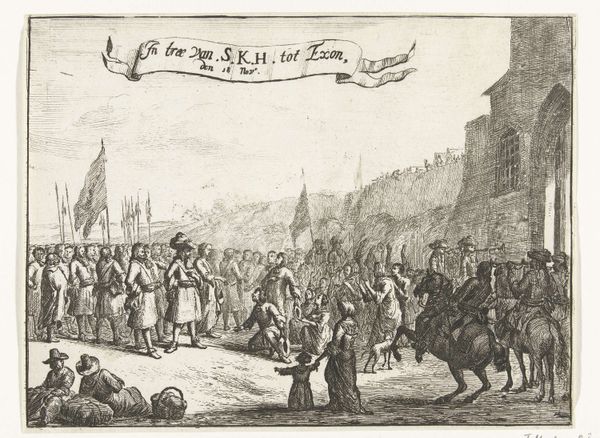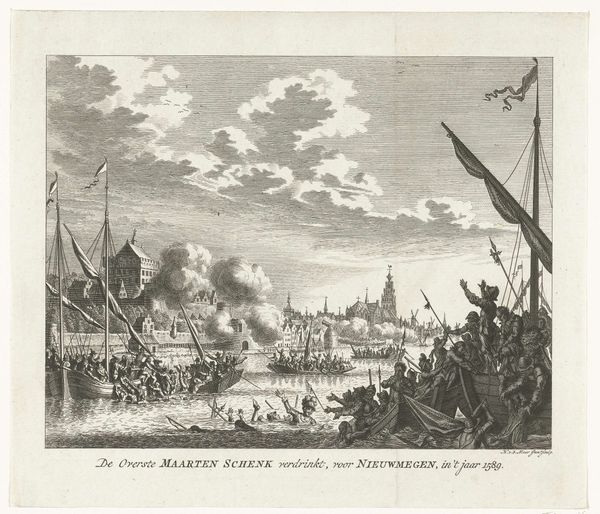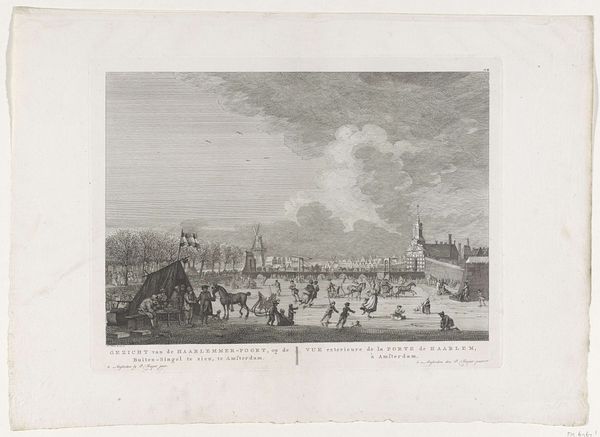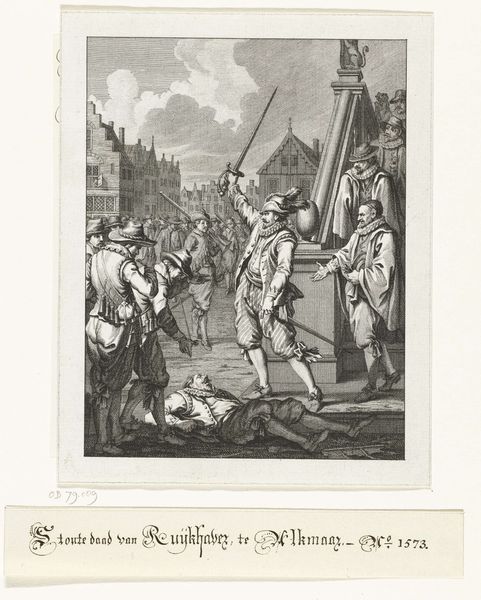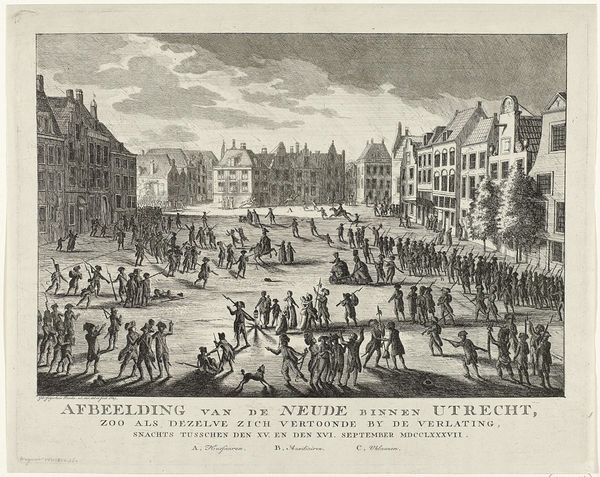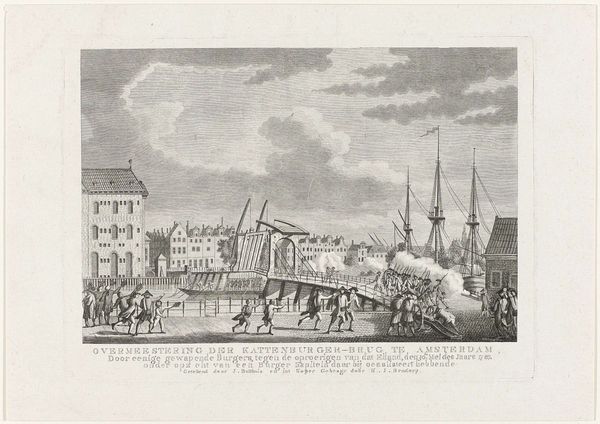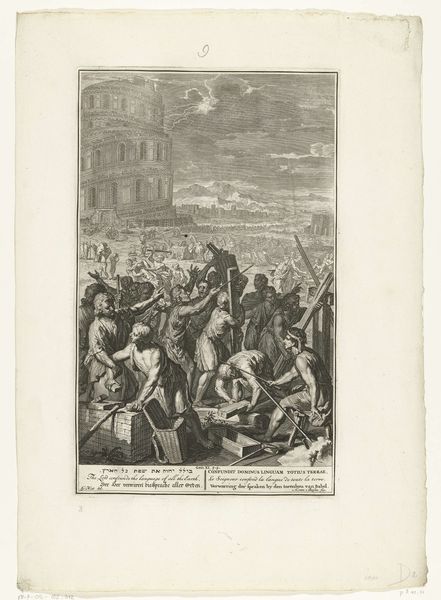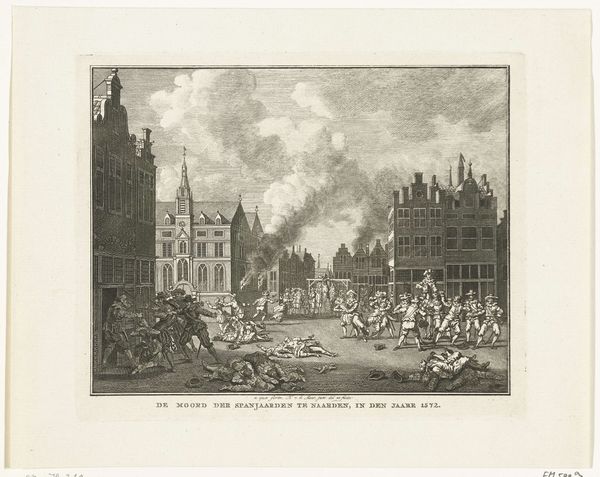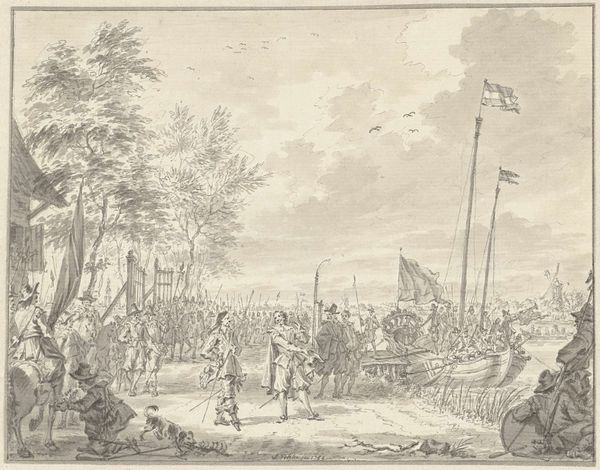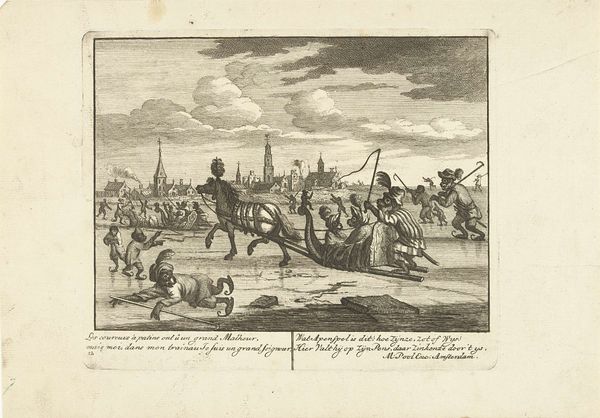
Uitbraak van de opstand in Brabant tegen het Oostenrijks gezag, 1789 1800 - 1806
0:00
0:00
print, engraving
#
neoclacissism
#
narrative-art
# print
#
old engraving style
#
archive photography
#
personal sketchbook
#
historical photography
#
history-painting
#
engraving
Dimensions: height 200 mm, width 245 mm
Copyright: Rijks Museum: Open Domain
Curator: This print is titled "Outbreak of the Revolt in Brabant against Austrian Rule, 1789," crafted by Paul Jacob Laminit between 1800 and 1806. It employs the engraving technique to capture a pivotal historical moment. Editor: What immediately strikes me is the energy—a controlled chaos conveyed through the dense arrangement of figures. The stark contrasts contribute to a sense of urgency and conflict. Curator: The artist certainly makes use of classical compositional devices, setting up the scene to be read through the various groupings, creating implied lines of force guiding the viewer's eye to the backdrop of what I assume is meant to represent Brussels or another key urban location. Editor: Considering it depicts the Brabant Revolution, it's fascinating how Laminit uses familiar visual motifs of upheaval—crowds surging, fallen bodies—but also, perhaps more subtly, Austrian symbols like the Imperial Eagle being defaced or replaced would reinforce the core revolutionary sentiment here. Curator: Indeed, the composition, particularly the foreground's dynamic arrangement and perspectival space leading into the more crowded background, echoes neoclassical history paintings. The balance between clarity and the complexities of social unrest are held in careful tension. Editor: Right—it’s this interesting dichotomy that really elevates the work. Even something as simple as the architectural forms—their implied solidity and power in opposition to the people—becomes a kind of visual shorthand, laden with symbolic significance, telling of both authority and challenge to that authority. Curator: In analyzing Laminit's "Outbreak," we see not merely a historical record but a self-conscious work engaged with representational traditions. The technical mastery of engraving is subservient to larger aesthetic concerns and historical narrative. Editor: And for me, seeing these familiar symbolic clashes—oppressors and the oppressed—played out allows us to connect this relatively localized event to broader historical and even psychological currents, reminding us that the thirst for self-determination runs deep.
Comments
No comments
Be the first to comment and join the conversation on the ultimate creative platform.
